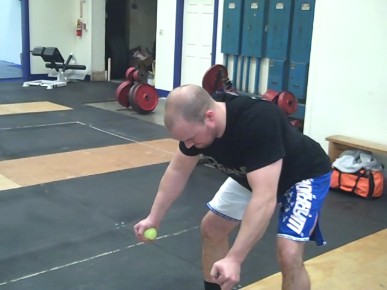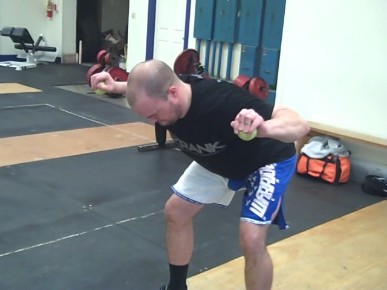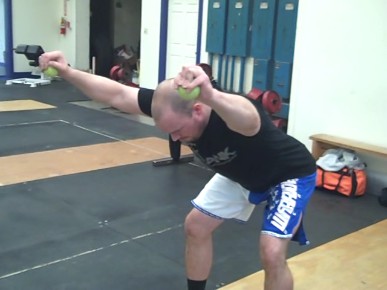A New Perspective on Activation
By Jim Smith, CSCS, RKC
Over the last 3 years I have made a huge change in the programming for my athletes. The warm-up that was once a formality has now become the center for the entire program.
Why?
Because it is that important!
When I started focusing on the warm-up and pre-workout activation and mobility movements, everything changed. My athletes started the sessions with more speed, more power and more enthusiasm. Not only that, their recovery was much better because the same exercises I used in their warm-up, became a means to help them recover faster between sessions.
Another thing I noticed in this journey was something of equal importance; tension. I really started paying attention to the time under tension (TUT) each exercise provided for the athletes. Think explosive reverse hypers on a reverse hyper bench vs. controlled reverse hypers on an elevated swiss ball with a tempo of 333. Now you’re starting to get the idea.
When you start making tension a focus and finding exercises where the tension is “leaking”, you will finally start to make the transition from the risk to reward and partial benefit to full benefit.
A major find in our program was in a shoulder warm-up / rehab complex; the Rotator Y, T, W, L series. A few of the benefits range from rhomboid and mid-to-low trap activation, scapular mobility, better posture, etc. You know all of that, but have you ever thought of what is used to create the tension?
Typically a light dumbbell(s) are used for these exercises. We still use them (and sometimes elastic bands) but only after the athletes are taught tension.
Let me ask you a question: What happens when the hands and grip are loose on the dumbbells? Optimal tension is lost. The body is a kinetic chain and the tension in our hands translates across the arms, shoulders and upper back if our grip is tight.
And if the grip is tight AND we engage the full kinetic chain by removing an incline bench (lying face down) and performing the movements standing, we will be closer to achieving optimal tension. And optimal tension will have the highest impact and best results.
 The movement patterns are retrained with the athlete holding and squeezing a tennis ball in each hand. The coaching cue is to squeeze the hell out of the tennis ball and allow the tension to travel across the forearms, biceps, triceps, and shoulders into the upper back during the concentric and eccentric phases of the pattern.
The movement patterns are retrained with the athlete holding and squeezing a tennis ball in each hand. The coaching cue is to squeeze the hell out of the tennis ball and allow the tension to travel across the forearms, biceps, triceps, and shoulders into the upper back during the concentric and eccentric phases of the pattern.
Let’s look at how we can incorporate more tension with the introductory movements. A simple tennis ball is used to create a lot of constant tension throughout the engaged movement pattern. The coaching cue will be to squeeze the tennis ball as hard as you can throughout the exercise execution.
Bent-Over “Y”


Bent-Over “T”


Bent-Over “W”


Rotator Cuff “L” with Rotation




The transition from tennis balls to greater tension can be facilitated with elastic bands and finally with the incorporation of dumbbells (Note: A combination of dumbbells and elastic bands can also be utilized), but the cue is still the same. Squeeze the implement hard.
Remember, the implement doesn’t matter as much as the tension. The tension is the key to true motor unit recruitment and activation. As the athlete learns how to create and maintain the tension throughout the exercise, progression can then take place.
Note from MR: Don’t forget! Smitty’s Accelerated Muscular Development is only on sale for another 48 hours. If you’re interested in learning more about the product, or saving yourself 20% off the normal purchase price, simply follow the link below.
Accelerated Muscular Development
(Lead Photo Courtesy of Mattsip)

